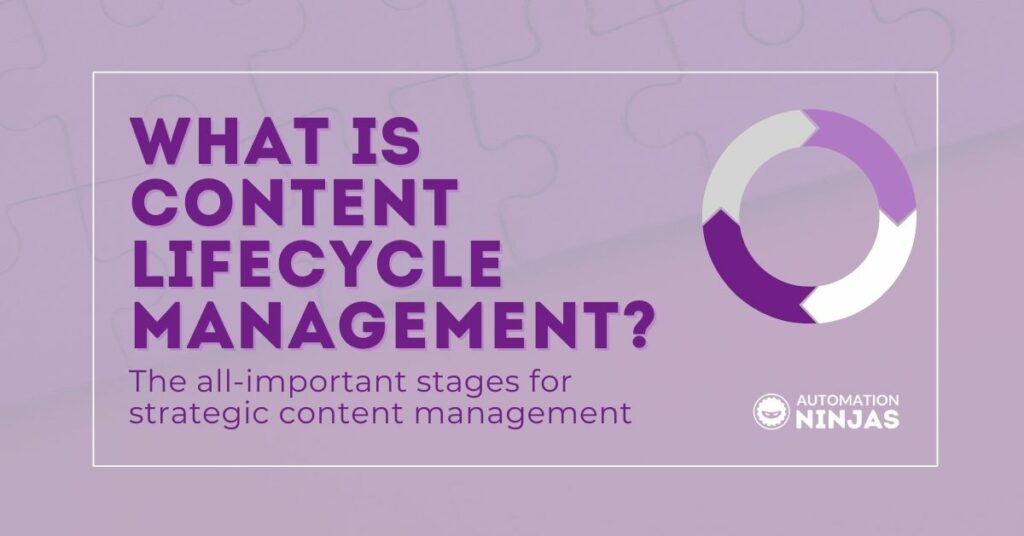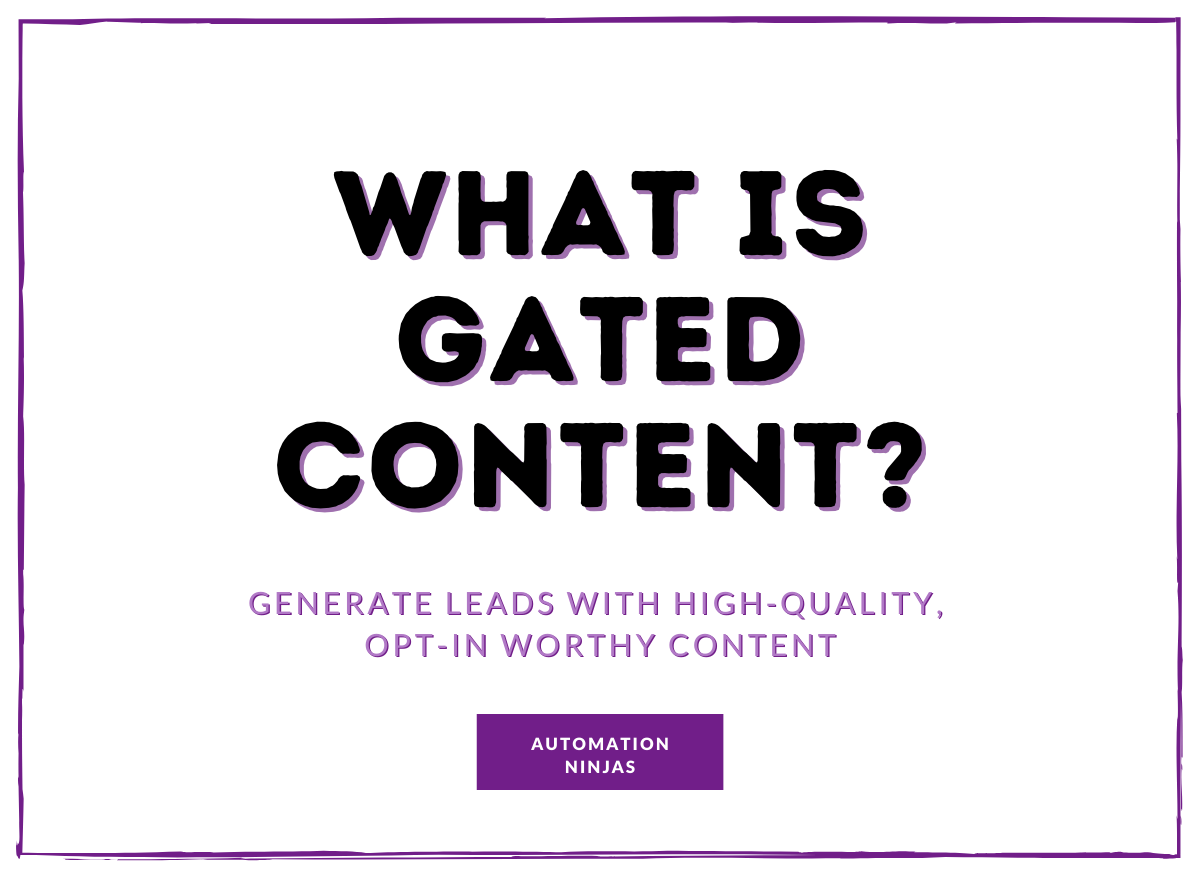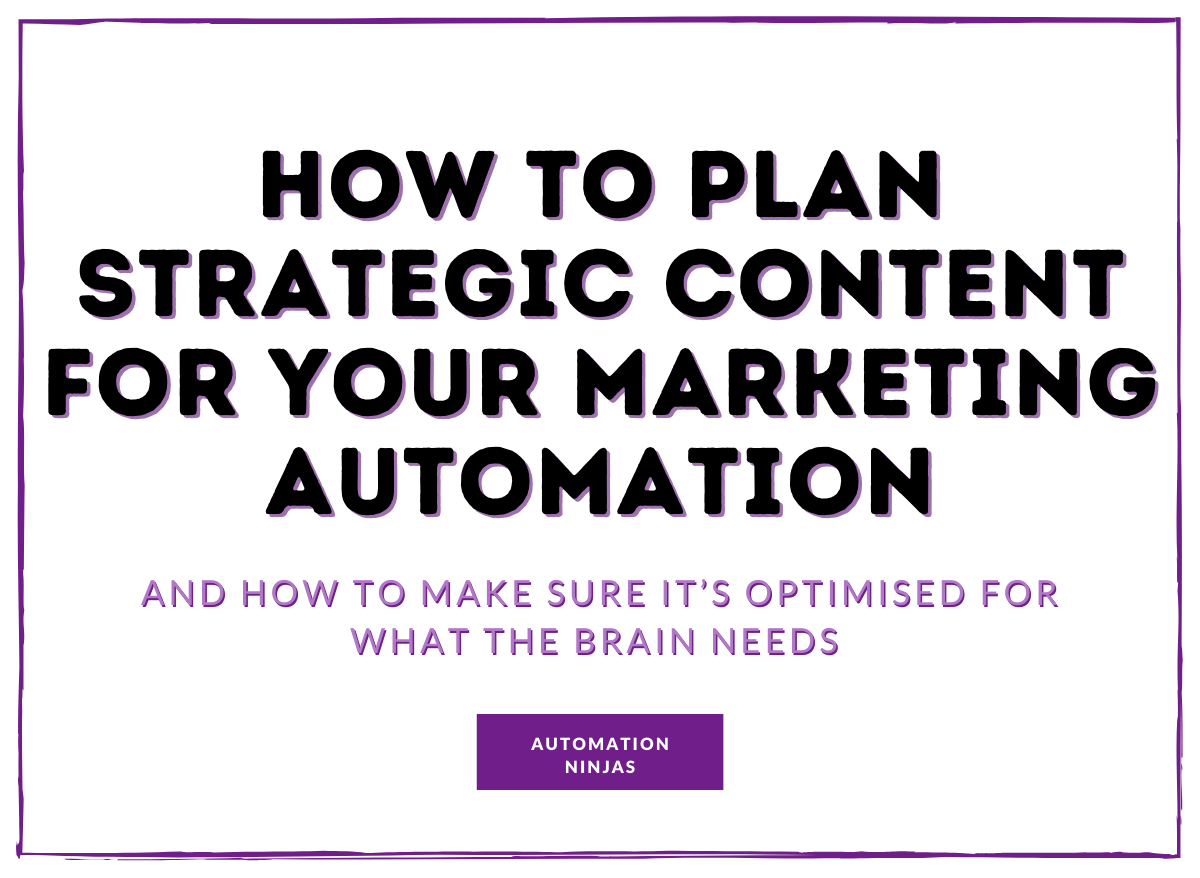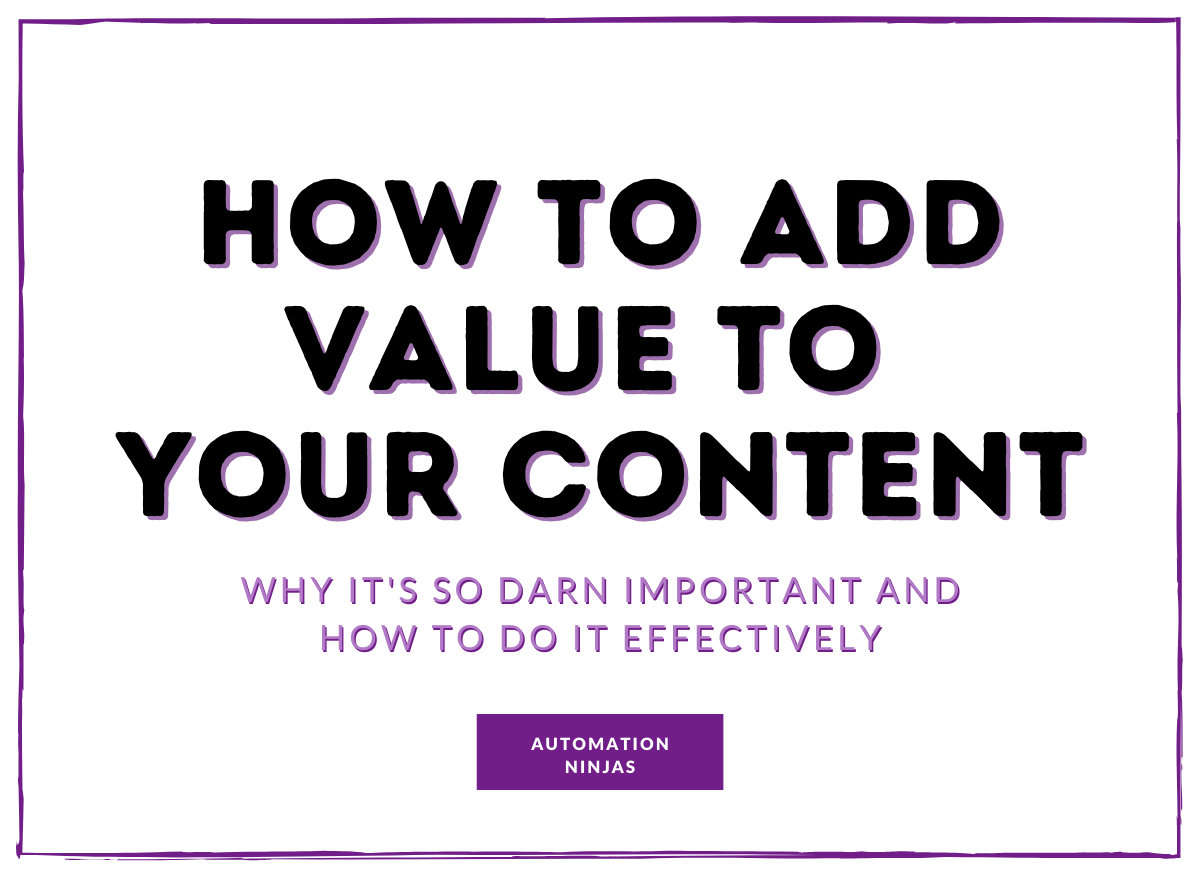The all-important moment in the content lifecycle is hitting the publish button, right?
After all, that’s when you share your work with the internet.
It’s easy to think of this as the pinnacle moment of content creation. However, this is not the beginning, nor is it the end; it’s just one step in the content lifecycle.
Now, the span of your content’s lifecycle will vary significantly depending on its form. Social media posts, for example, have a relatively short lifespan due to the nature of these platforms which are constantly updated with new posts.
In contrast, blog posts and website content can stay relevant year after year, thanks to upkeep and optimisation which extends their lifespan.
No matter the form of the content, there are stages to each.
So, in order to produce the most relevant and effective content, which is aligned with your business aspirations, you’ll want to ensure you’re following best practices at each step.
Understanding this content lifecycle allows you to effectively prepare for what is required at each stage and ensure you produce your best content.
In this blog, we’ll go over the key stages of a content lifecycle and explain why it’s important to have effective management of these.
What are the stages of a content lifecycle?
Just like us humans, content follows a pattern too…
So, what are the stages of a content lifecycle?
Exactly what you do at each stage will vary from business to business based on your goals.
In some cases, you can adjust each stage to suit your content needs. Plus, you can revisit or alter each step if you wish.
The most important aspect is just that you arrive at each point of the content lifecycle.
But generally speaking, the stages come as follows:
1. Planning
2. Creation
3. Editing
4. Publishing
5. Promotion
6. Analysing and Updating
7. Removing and Archiving
Content lifecycle stage 1: Planning
Strategic planning is the utmost necessity for content creators.
All content produced should tie into a wider plan. One that targets visitors in each stage of their customer journey and leads them in the direction of conversion.
So, before diving straight in, you’ll need to take some time to reflect and project.
At this point, the priority is getting a good grasp on who your potential site visitors are and what they need at each stage of their journey. Only after doing this can you produce content tailored exactly to people’s needs. Content, which is more likely to perform well. Otherwise, you are just guessing.
Keyword research comes under the planning stage. This helps you find out what there is demand for so that you can create something people will be searching for.
Another part of planning involves analysing previous content that performed well or not so well. From this, you can see how to improve or maintain techniques for next time.
After doing all of this reflection and evaluation, you can create a carefully thought-through content plan. This is the essence of the planning stage.
Related content: What is a data-driven content plan?
Content lifecycle stage 2: Creation
The creation stage is where your content really starts to come to life. It’s arguably the most exciting part, and you'll spend a large portion of time in this stage.
Once your brainstorming, preparations, and approvals are complete, you can get started creating the content.
And there’s more to it than just writing well and publishing regularly.
You’ll need to keep your target audience at the forefront of your mind and offer valuable, easy-to-read information which is consistent with your brand voice.
There are also several technical aspects to consider.
Firstly, using enough keywords is essential in getting your content to rank and effectively reach the target audience.
Headings, meta descriptions, and URLs need to be optimised, and you should use a platform with good information architecture. This refers to the organisation and labelling of websites to support usability and findability.
Ultimately, if the content doesn’t appeal to customers and they’re unable to engage, it will flop.
Content lifecycle stage 3: Editing
Next is the editing stage; making all the final touches before the content goes live.
High-quality content comes from high-quality editing, so it’s really important to not skip over this part.
Editing covers checking over grammar, structure, formatting, proofreading, and brand voice. You’ll also need to optimise everything and ensure its consistency.
This is also the stage to ensure that all the information is factually correct.
Content lifecycle stage 4: Publishing
Now it's time to release the content to the world. You've worked so hard, and it's time to hit publish.
TADA!

You can streamline this process by using a publishing checklist. We recommend that you create one to ensure publishing consistency.
The checklist might include items such as uploading images or scheduling the upload.
When everything is triple-checked and prepped, you can fire it away!
Content lifecycle stage 5: Promotion
Wahoo! Now it’s published you are done, right?
Not quite.
Promotion is a really vital step in the content lifecycle. It’s just as important, if not more, than the actual content itself.
After all, no matter how great your content is, there’s no real lasting effect if it’s not properly distributed and seen. Yes, search engines should show your results if you've done the other steps right. But there is no harm in getting it in front of as many eyeballs as possible via promotion.
There are several different ways to promote your content. This could be via social networks, email, or search engine marketing. Alternatively, you can aim to get backlinks from other high-authority websites with similar target audiences to give you a boost in organic SEO. We recommend focussing on the social channels preferred by your target audience.
Content lifecycle stage 6: Analysing and Updating
The journey doesn’t end when you hit publish and promote your content. You can learn a lot from how content performs.
Web analytics tools give you access to data about your page visitor numbers, returning customers, bounce rate, and more.
Comparing these figures with previous stats and reflecting on the data allows you to identify trends and see what kind of content leads to a higher conversion rate.
For content such as blog posts which have a longer lifespan, they can continue to rank highly in search results, year after year.
This is called evergreen content and is largely made possible by the analysis and updates warranted in this stage of the content lifecycle.
If your old content is still generating engagement and has a valuable message, there’s no need to delete it. All you need to do is update your content and show it a little TLC.
Reposting previous blogs can be even more effective as the URL may already have backlinks and authority in search engine results.
What is evergreen content?
Evergreen content is content that never loses traffic or continues to increase traffic over time. It stays just as fresh and relevant as it was on the date of publishing. Although evergreen, you will still have to analyse and update it over time, which will ensure it’s still relevant and optimised for the present.
Content not considered evergreen would be featuring topical news items, clothing trends, or seasonal content for example, that will quickly go out of date.
The most common and successful forms of evergreen content are in the format of How-to or top tips blog posts.
According to the SEO experts at moz.com, long-form content consistently receives more shares and links than shorter-form content. This means that blogs over 1000 words are more likely to be evergreen.
While evergreen content is much easier to sustain long-term, it still must be monitored and revised over time in order to keep performing highly.
Many pieces have the potential to be evergreen but fall into disuse due to lack of upkeep. Many companies hit publish then never look at it again.
BIG MISTAKE...

The analysis and updating stage can be as simple as checking in from time to time and making little changes. These alterations will keep the content relevant and could involve updating statistics or screenshots, and removing discontinued products or services.
Content lifecycle stage 7: Removing and Archiving
Finally, we’ve made it to the end of the content lifecycle.
While some pieces of evergreen content may last forever, others may reach a point where they need to be removed and archived.
This will need to be done when the information is too irrelevant, hinders people from finding what they need, or no longer represents your brand.
For content that you want to remove entirely, you can plan to send traffic from the old page to a web archive.
But why archive your content instead of deleting it?
Archiving helps to keep your website and social networks clutter-free and relevant to your services.
For example, maybe you once offered web-design services but no longer do. You can archive blogs relating to this so as not to confuse visitors (just remember to redirect the link).
It’s also a form of preservation. Away from the public eye but not completely deleted, you can keep access for historical or future use.
Why is it important to know about the stages of a content lifecycle?
Why exactly is this such an important concept to know about then?
If you’re working with content in any form, having an awareness of its lifecycle helps you to maintain a clear focus and stay on track when producing content. Additionally, making a point to consider the customer at all stages ensures that the content remains user-focused.
It gives you a clear structure and repeatable process to follow which ensures that you don’t miss out on any steps. Still, if necessary, you can refer back and pinpoint certain stages in the content lifecycle that require more attention.
Thanks to the analysing and updating stage, you can end up with better results by maintaining the content you have already produced.
Functionality leads to conversion, and awareness of content lifecycles causes you to produce well-functioning posts.
If you need help with your content then contact a Ninja today 🙂






